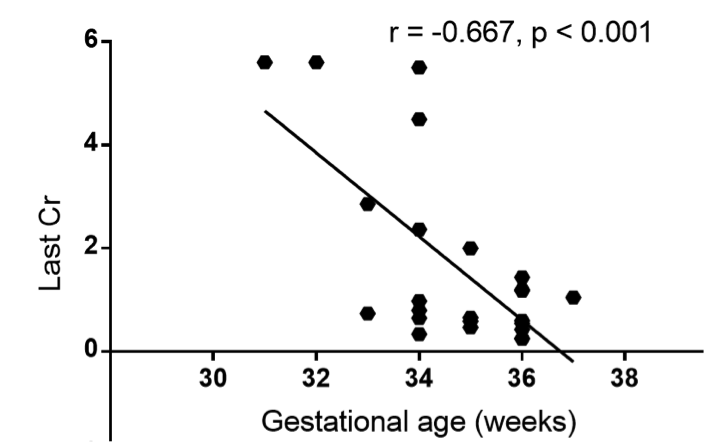Posterior Urethral Valves In Preterm And Low Birth Weight Boys: Is Valve Ablation During Neonatal Period Safe And Effective?
Paulo R. Moscardi, M.D., Rubén Blachman-Braun, M.D., Angela Gupta, M.D., Natalia Ballesteros, M.D., Andrew Labbie, M.D., Kristin Kozakowski, M.D., Alireza Alam, M.D., Rafael Gosalbez, M.D., Miguel Castellan, M.D..
Nicklaus Children's Hospital, Miami, FL, USA.
Background: The purpose of this study is to examine the safety and efficacy of PUV ablation during the neonatal period and to compare the outcomes between premature/low birth weight (LBW) and full-term neonates.
Methods: a retrospective chart review was conducted to identify all neonates (0-28 DOL) treated with valve ablation for posterior urethral valves at our center. Patients were further divided in 2 groups: group 1 was defined as neonates either born with LBW (<2.5 Kg) or premature (<37 weeks); and group 2 included term and BW >2.5Kg neonates. Perioperative data and long term outcomes including renal function outcomes were compared amongst the 2 groups.
Results: From 2004 to 2015, 130 patients were treated with valve ablation for PUV and among them, 44 neonates were identified and met the above inclusion criteria with adequate follow-up. Group 1 comprised 25 preemies/LBW neonates while group 2 included 19 term neonates. No statistical significant difference was encountered among the age at surgery (both with a median of 7 DOL; p=0.91) nor the time of follow-up in months (mean of 71.4 ± 39.1 vs 57.6 ± 34.2 for group 1 and 2 respectively, p=0.23). However, significant differences were encountered in the renal function parameters between the two groups (group-1 vs group-2): initial mean serum Cr (2.19 ± 1.53 vs 1.1 ± 0.62 mg/dL; p=0.004) and initial mean eGFR (11.4 ± 7.4 vs 23.7 ± 15.1mL/min per 1.73m2; p=0.003). Additionally, this difference was observed during follow-up with the nadir of Cr during the first year of life (1.18 ± 1.31 vs 0.50mg/dL ± 0.45; p=0.03), best eGFR during first year (37.2 ± 29.8 vs. 90.1 ± 78mL/min per 1.73m2; p=0.036) and the eGFR at the last follow-up (78.1 ± 52.3 vs 118.2 ± 54.3mL/min per 1.73m2; p=0.02). Moreover, among the preterm patients (group 1) a strong negative correlation was observed between the last Cr and gestational age at birth (r=-0.667; p<0.001) (graphic). Despite the differences in the renal function outcomes, no other disparities were found in other variables analyzed including: VUR and hydronephrosis (pre and post valve ablation), valve revision rates, urethral strictures, voiding dysfunction and augmentation rates.
Conclusions: Primary ablation of posterior urethral valves represents a feasible option for premature and low birth weight neonates. These patients have worse outcomes related to renal function after birth and in the long-term follow-up when compared to term babies. However, no other differences were observed regarding other outcomes like bladder function and revision rates.
graphic: pearson correlation between last follow-up Cr and gestational age in preterm patients.
Back to 2017 Program
